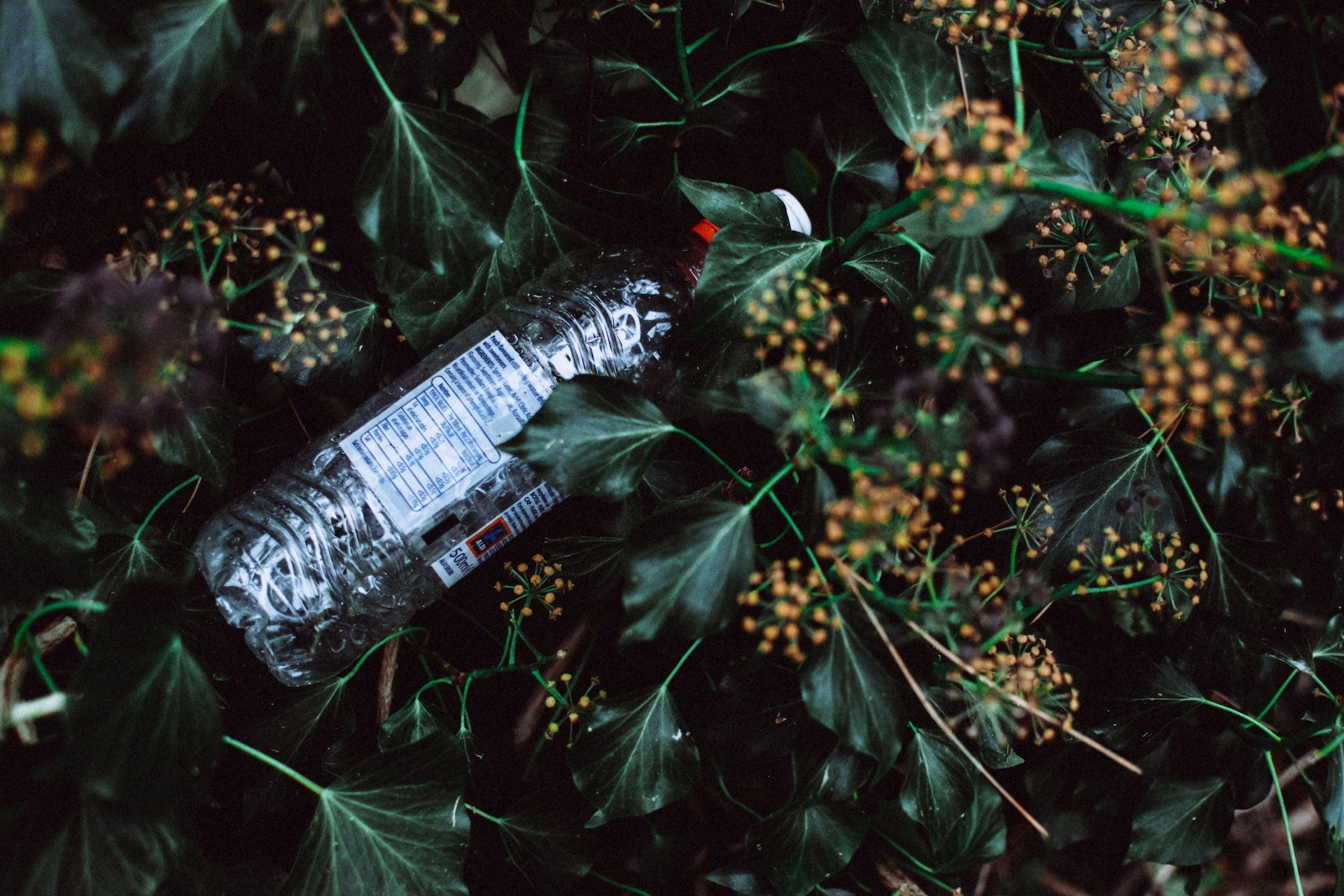Here’s a roundup of some of the finest sustainable fashion stories that hit the news in December…
"First piece of clothing ever" coloured with black algae dye
A first nugget of good news from the realm of sustainable fashion comes from experimental clothing brand Vollebak and biomaterials company Living Ink who have collaborated to create a black dye made from algae rather than petroleum. The dye is created from heat treated waste spirulina algae. Living Ink claims that the process helps to lock away the carbon absorbed by the algae making the dye carbon negative!
Wondering what it looks like? Here you go. It's also worth pointing out that the dye is applied to a t-shirt that’s built with seaweed from Norwegian sea fjords.

Having a sustainable alternative to carbon black-based dyes should result in a significant reduction in emissions, as carbon black is used in many products beyond clothing such as cars, phones and even the ink in pens. Living Ink says that tyre and rubber manufacturing accounts for 90% of carbon black production. Here’s hoping that the processes used to manufacture the algae based dye can be scaled and integrated accordingly!
New EU deforestation law to reduce fashion's reliance on rubber
Apparently the colour of your wellington boots matters, although we’d argue that the origin of the rubber in boots matters more. It would seem that the European Union agrees with us. A new law agreed by the European Union will ban the import of products linked to deforestation. In addition to household goods, like coffee and cocoa, it would also apply to timber and rubber. Note that growing rubber increases biodiversity loss and soil erosion, as well as producing hazardous waste, chemical smells and pollution linked to the processing of natural rubber.
Companies will have to prove that their products are deforestation-free and legal. Not only that, they will be required to collect precise geographical information on the farmland where the commodities that they source have been grown, so that these commodities can be checked for compliance.
Considering that the EU imports about 25% of global rubber production, there could be a significant impact on global supply chains as manufacturers seek to maintain compliance with the new law. The effect could be more pronounced in the footwear industry where some industry estimates consider about 30 percent of all shoe soles in the world's shoe production to be made of rubber.
CDP A List released - but not many brands make the cut
The Carbon Disclosure Project announced the names of brands on this year’s A List based on analysis of their transparency and efforts in climate change, forest preservation and water security. Only 330 brands of the 15,000 analysed made it to the A list (each company is allocated a score of A to D minus).
Brands in the A list include Superdry, fast fashion conglomerate Inditex (owner of Zara), Kering (owner of Gucci, Saint Laurent, Balenciaga etc.), British label Burberry and jewellery brand Pandora. Sportswear brand Puma is one of the newcomers on the list.
We have to be mindful that these analyses are not giving A grades for perfection (as the next story in our list suggests) but rather for demonstration of leadership and disclosure transparency in an industry that still has a lot of work to do. To this end, we applaud those that are making an effort to change. If fast fashion houses such as Zara and luxury fashion brands such as Burberry (forever linked with the burning clothes story) can change their ways then surely we simple folk can make some small changes to improve outcomes, right?!
Good on You rates 4,000 brands on their progress on climate change
An alternative set of ratings has come from sustainability ratings company Good On You. The company has scored 4,180 brands on more than 100 sustainability issues on a scale of 1 to 5, from “We Avoid”, “Not Good Enough” and “It’s a Start” to “Good” and in exceptional cases: “Great”. The summary outcome of this analysis was unfortunately that: “It’s too much greenwashing, too little action.”
Some of the detailed findings included that 51 percent of large brands with greenhouse gas emissions targets do not state whether they are on track to meet them. This suggests that certain disclosures may need to be mandated by governments to ensure that what gets measured, gets managed!
When Good On You looked at the top 40 profitable brands from FashionUnited’s Index of Most Recognised Fashion Brands, it found that none of them got the top “Great” rating for the environment. In fact, only 8 percent of all brands analysed received the top score while 64 percent got the lowest environmental ratings, either “Not Good Enough” or “We Avoid”.
When smaller, sustainability focused brands are removed from the mix, the picture looks worse. Good on you sums up: “In other words, the sustainable brands in this sample demonstrate it’s possible to do much better.” Yay, us!
Here’s an infographic from Good on You that goes into some of the findings.

Could buy now, pay later help popularise sustainable fashion?
While sustainable fashion still isn’t widely affordable, the Buy Now Pay Later (BNPL) scheme is making it more accessible. Which is a good start. There’s definitely more resistance to paying a big sum of money at once. And for some, it’s not even an option - so it’s a good idea for brands who want to be more inclusive. It’s said that 24% of people in Europe are using BNPL schemes already! And 62% of BNPL users have said that they’d pay more for sustainable products if they could use this scheme. All of these stats and more were discussed in a revealing article from Stylist in December. Link above.But if you’re not someone who’s financially responsible, perhaps stay away from this option before you end up in debt or spending more than planned because it seemed like a ‘cheaper’ option at first. As expected, there are many pros and cons to BNPL. Most importantly though, it’s benefitting the buyers who choose to make sensible use of it.
To complement schemes like this, we also hope sustainable fashion starts to become more affordable over the next year, too. Sustainable fashion needs to be popular to make an impact, after all.
And that’s all for this month. We’ll be back with our first roundup from 2023 at the beginning of February.




